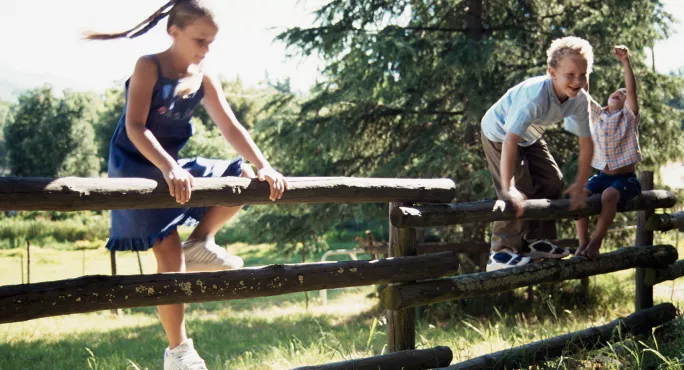Balance and boundaries are key to behaviour

A great deal of educational debate and discussion is now played out on social media - and that means divisiveness and sides being taken, rather than measured analysis.
This is perhaps more evident in the educational landscape in England. When it comes to behaviour and relationships, some schools and school leaders seem keen to wear the badge of “no excuses” or the alternative of “nurturing inclusion”, at the exclusion of valuing other perspectives.
Scottish education secretary Jenny Gilruth’s series of behaviour summits has, therefore, been a refreshing alternative to the over-simplified debate played out on platforms such as Twitter.
A wide range of voices have been heard, from class teachers to representatives of non-teaching staff, partners and support services, headteachers and leaders from across the system.
The most recent summit, held last week, focused on maintaining calm, consistent and safe school climates. I helped to open that meeting and my remarks can be summed up simply as “balance and boundaries” - and what is needed to create these.
- Background: Violence in schools summit announced
- School safety: Teaching has become “unsafe and abusive”
- Behaviour: Non-punitive approach “often ineffective”
- Long read: Scotland’s “behaviour emergency”
There has been a reasonably settled consensus in Scotland in favour of inclusion, the presumption of mainstream provision and the crucial importance of positive and nurturing relationships.
Alongside focusing on positive relationships, schools must not forget about the importance of clear expectations and boundaries. The two are, of course, not mutually exclusive.
Behaviour: creating a calm school environment
A settled, positive climate is often the foundation for positive relationships to flourish, and this continues in a virtuous cycle. For boundaries to be effective, schools - and therefore school leaders - must be absolutely explicit about the behaviours expected and exactly how this looks on a day-to-day, period-by-period basis until it is ingrained in a school culture and seen everywhere.
For some schools, this might mean revisiting the basics:
- Lesson/classroom exits.
- Movement around the building.
- Acceptable language - and the response when the language isn’t acceptable.
- Technology use.
- Reasons for any time out of class - monitoring and responding to concerns.
At precisely the time - in the wake of the pandemic - when young people perhaps need the most structure, some school settings may have been providing less.
Structure, boundaries and positive relationships can also require the unpopular word “consequences”. Some of our most vulnerable learners require boundaries and feelings of safety the most. That requires clarity and consistency.
It is perfectly possible to have a values-based social contract, respecting children’s rights, co-creating the rules and norms of a school community and specifying the consequences when these rules and norms are not met.
This is where the balance is needed. Strict, rigid discipline systems will often meet the needs of almost all learners - but not all. Inclusion - and a commitment to getting it right for all - requires the individualised planning, strategies and resources to ensure that all learners’ needs can be met. The majority need structure, clarity and consequences, while some need individual planning and responses.
I can imagine a groan of “Tell us something we don’t know!” from colleagues reading this. My point is that we need to question whether those structures, boundaries and consequences are as secure as our approach to restorative practice and individual support strategies.
I do not believe the system is “broken” or that Scottish schools are in “chaos”. The new Behaviour in Scottish Schools research report, which is due in November and will be the first since 2017, will show the lived experience in schools across the country, and my guess is that an increase in lower-level challenge will be more prevalent than a sudden increase in serious incidents.
Looking to the future, I believe we should maintain our values-based commitment to inclusion while recognising that an increase in expectations may be required in some areas. My own recipe for success going forward would contain the following ingredients:
- Consequences shouldn’t be seen as regressive - we should ensure that our standards and expectations remain high while maintaining restorative practice and a focus on the rights of all as an important part of that.
- Swearing should never be seen as an acceptable or excusable form of communication in schools. Where this is the case it lets everyone down, including the learner.
- Curriculum flexibility should be in the mix, with the focus on responding to the needs of individual school communities.
- Schools must be able to recruit their own staff - the difference that a particular pupil support assistant can make to an individual pupil should never be underestimated.
- We should be more focused on outcome than ideology in the creation of a positive school climate.
Some of the most joyful moments in my life have been working in school with young people. We want our schools to be the best possible environments - but let’s also recognise the fantastic work that so many school staff already do to create the magical moments of learning and progress in very positive environments.
Stuart Clark is a secondary headteacher in East Renfrewshire, and was previously a head in Inverclyde. He is writing in a personal capacity and tweets @MearnsCastleHT
You need a Tes subscription to read this article
Subscribe now to read this article and get other subscriber-only content:
- Unlimited access to all Tes magazine content
- Exclusive subscriber-only stories
- Award-winning email newsletters
Already a subscriber? Log in
You need a subscription to read this article
Subscribe now to read this article and get other subscriber-only content, including:
- Unlimited access to all Tes magazine content
- Exclusive subscriber-only stories
- Award-winning email newsletters



